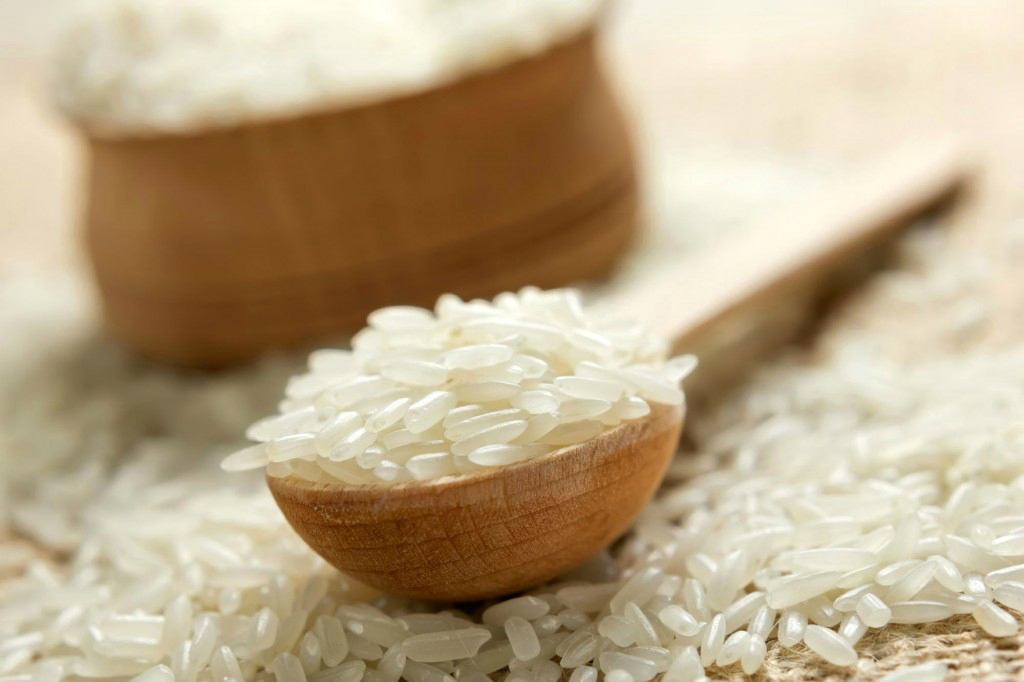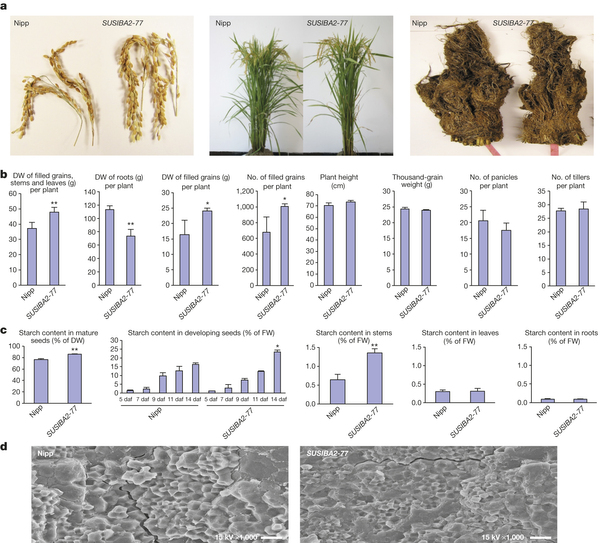The following is a ThinkProgress.org article by Natasha Geiling, posted July 23, 2015, with the above title:
Aside from corn, rice might be the single most important staple crop on Earth. According to the International Center for Tropical Agriculture, more than 3.5 billion people around the world depend on rice for at least 20 percent of their daily caloric intake. But rice is also a major source of methane, a potent greenhouse gas that’s more effective, at least in the short term, at trapping heat than carbon dioxide. Now, scientists at the Swedish University of Agricultural Sciences think they’ve found a solution: a high-yielding, low-methane type of rice that can cut methane emissions from rice cultivation by up to 90 percent.
To create the starchy, climate-friendly rice, the scientists transferred a single gene from barley to rice that stimulates the production of starch in grain and stems. According to the study, published this week in Nature, previous research has shown that rice plants with smaller root systems tended to expel less methane than plants with larger roots, and the scientists hoped that by emphasizing starch growth in the stems and grains, the rice plants would naturally grow smaller root systems. Root systems in rice secrete the carbohydrates created by photosynthesis — when rice paddies are flooded, the oxygen-devoid environment provides the perfect breeding ground for methane-producing bacteria that feed on these carbohydrates. By reducing the size of the rice plants’ roots, the scientists hoped that they could curb the amount of methane produced in the fields.
To test how the modified rice plants fared in the real world, the scientists planted the rice in two different fields in China, alongside conventional rice, which served as a benchmark. Over three years, they measured the methane emitted by the plants in the fall and summer, near the end of the growing season. They also took measurements of starch content in the plants’ stems, roots, and seeds.
They found the modified rice plants extremely effective at producing starch and curbing methane emissions. In the summer, when temperatures were highest, the modified rice cut methane emissions to 0.3 percent of conventional rice. On average, the modified rice produced less than 10 percent the methane of conventional rice, while providing 43 percent more grain per plant.
In an essay in Nature that accompanied the study’s publication, Paul Bodelier, a researcher at the Netherlands Institute of Ecology who was not directly involved with the study, called the findings “a tremendous opportunity for more-sustainable rice cultivation,” but cautioned that large-scale trials are necessary before moving forward with full-scale commerical use. Without more trials, Bodelier wrote, it’s difficult to know how the genetic modification impacts the rice cultivar’s long-term chances for survival. It’s also important to study how the plant’s root system impacts microbes in the soil — microbes that themselves contribute to the production and consumption of greenhouse gases like carbon dioxide, nitrous oxide, and methane.
In an interview with the Los Angeles Times, Bruce Linquist, a plant scientist at the University of California at Davis, echoed Bodelier’s sentiment. The research is too preliminary to know for sure how the genetic modification impacts methane production, Linquist said, and there is some concern that smaller root systems might impact the plants’ ability to take up nutrients.
Even if further trials prove the efficacy of the modified rice, it faces huge hurdles in order to become commercially viable. Largely in response to public distrust of genetically modified foods, no genetically modified rice has ever been successfully used in commercial production. Golden rice — a genetically modified strain of rice that contains beta carotene to combat malnutrition in developing countries — was ready for full-scale use in 2002, but has faced staunch opposition that has kept it from market for over a decade.
Despite public distrust — a January poll conducted by Pew found that 57 percent of Americans think genetically modified foods are generally unsafe to eat — nearly all scientific evidence suggests that genetically modified foods pose no threat to human health. There is some concern, however, about the environmental impact of genetically modified foods. Crops like Roundup-resistant soy or corn have led to a marked increase in the use of herbicides in the United States, though some studies have also shown that genetically modified crops have led to a decrease in the use of some pesticides. Since the low-methane strain of rice isn’t bred to be herbicide or pesticide resistant, this most likely won’t be an issue with this particular strain — though the way that its root-system interacts with microbes in the soil is something to watch.





